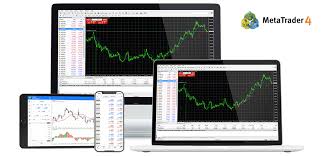Contracts for Difference (CFDs) have grown in popularity among traders due to their flexibility and potential for profit in rising and falling markets. However, successful CFD trading is not merely luck—it requires a well-thought-out strategy, discipline, and informed decision-making. This blog will explore key CFD Trading strategies and how you can effectively boost your chances of success.
Understand the Basics Before Trading
The first step to success in cfd trading lies in understanding the underlying mechanics. CFDs allow traders to speculate on the price movement of an asset without owning the asset itself. The trader earns a profit or incurs a loss based on the price difference between the opening and closing positions.
To succeed, it’s crucial to understand concepts like spreads, margin requirements, and the risks associated with CFD trading. This foundational knowledge will help you create an informed trading strategy.
Use Risk Management Techniques
Effective risk management is essential in CFD trading. Without it, even a minor market fluctuation could lead to significant losses. Consider these strategies to manage risks effectively:
• Set Stop-Loss Orders
A stop-loss order automatically closes your position once a predetermined level of loss is reached, protecting you from excessive losses during volatile market conditions.
• Allocate Capital Wisely
Never invest more capital in a single trade than you can afford to lose. Spreading your investment across multiple markets may also reduce the impact of a losing trade.
• Define Your Risk-Reward Ratio
Before entering a trade, determine your risk-reward ratio—how much you are willing to risk for a potential profit. Many traders prefer a 1:2 or 1:3 ratio.
Choose Markets Carefully
The success of your CFD trading largely hinges on choosing the right markets to trade. CFDs are available across different asset classes such as stocks, indices, commodities, and forex. Each market comes with unique characteristics, levels of volatility, and risk factors.
Analyze markets through technical and fundamental data before making decisions. For example, forex CFDs might suit short-term traders seeking high liquidity, while commodities might appeal to those focused on long-term trends. Tailor your choice to your trading style, experience, and risk appetite.
Master Technical Analysis
Technical analysis is a vital skill for any CFD trader. It involves analyzing historical price movements and patterns to predict future trends. Traders rely on tools like candlestick charts, moving averages, and support and resistance levels to make informed decisions.
Consider combining technical indicators for confirmation. For example, you might use moving average crossovers to identify trends and Relative Strength Index (RSI) to assess whether a market is overbought or oversold. This approach can improve the accuracy of your trades.
Stay Updated on Market News
Financial markets are highly influenced by global events, such as geopolitical developments, economic reports, and industry news. Staying informed allows you to anticipate market moves and adjust your trading strategies accordingly.
For example, unemployment reports or central bank meetings often have significant implications for forex and stock indices. Keeping an eye on an economic calendar will help you stay ahead of key events.
Focus on Consistency
Successful CFD trading isn’t about hitting a jackpot; it’s about consistent performance over time. Avoid impulsive trading decisions caused by emotional reactions to market swings. Instead, develop a disciplined routine that includes a detailed trading plan you adhere to.
Keep a trading journal to evaluate your past trades, review what worked and what didn’t, and refine your strategy. Over time, this practice will make you a more informed and consistent trader.
Final Thoughts
CFD trading offers exciting opportunities but requires a thoughtful and strategic approach. By mastering risk management, analyzing your chosen markets, perfecting technical analysis, and staying updated on global trends, you can significantly increase your chances of success.
Remember, CFD trading is a marathon, not a sprint. The path to success lies in discipline, preparation, and continuous learning. Want to deepen your understanding further? Stay tuned to our blog for more actionable insights into the trading world.
CFD Trading Strategies: How to Increase Your Chances of Success
